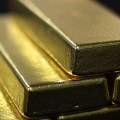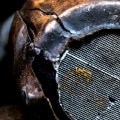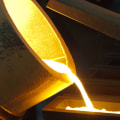There are eight metals that are considered precious. They are gold, silver, platinum, palladium, rhodium, ruthenium, iridium and osmium. Of the precious metals that are not gold or silver, platinum is the most traded. The most common types of precious metals that people invest in are gold, silver, and platinum.
Other types of precious metals include iridium, osmium, palladium, rhodium and ruthenium. The four main precious metals are gold, silver, platinum and palladium. Depending on the application, there are common alloying elements that can be mixed with major precious metals to improve the properties of the final product. There are other items of interest that are also used in jewelry or accessories made of non-precious metals.
Below is what makes a metal precious compared to other metals, plus a list of precious metals. Sometimes you have other precious metals that are valuable, such as palladium or platinum, and you can't see them just by looking at the piece. Precious metals are commonly used in jewelry, industrial processes or, very often, as investment vehicles. This means that even a small percentage of precious metals in a portfolio will reduce both volatility and risk.
Therefore, many experts in precious metals estimate that the recent increase in industrial demand and the weakening of global reserves may well continue to push the metal to new heights. But which precious metal is best for investment purposes? And more importantly, why are they so volatile? The price of physical precious metals is called the spot price, this is the price as it appears in the market, its most common unit of measurement is the troy ounce, which is a historical unit of 31.1 grams of precious metals. However, an investor should be familiar with the numerous ways to add precious metals to a portfolio, the additional costs that come with these options, and the long-term performance trends of the metals or related investments they are considering. The other precious metals are PGM (rhodium, ruthenium, osmium, iridium), rhenium, indium and certain alloys of one or more precious metals such as electro, which is a natural alloy of gold and silver.
For commercial buyers, precious metals can also be an essential component for products such as jewelry or electronics. Sometimes known as the most precious of precious metals after having experienced sharp price increases in recent years, it is also widely used in the automotive and electronics industries. There are many ways to buy precious metals such as gold, silver, platinum and a lot of good reasons why you should surrender to treasure hunting. Precious metals such as gold and silver have long been used as a means of storing and exchanging value.
In fact, beyond their commercial use in jewelry, there is a great and growing need for precious metals in many industries, from electronics and high-tech to medicine, automotive, and even space exploration. Investing in precious metals is a means of diversifying a portfolio that consists mainly of stocks and bonds. Gold is the highest-profile precious metal and constantly generates a lot of attention from financial media as well as market participants.




